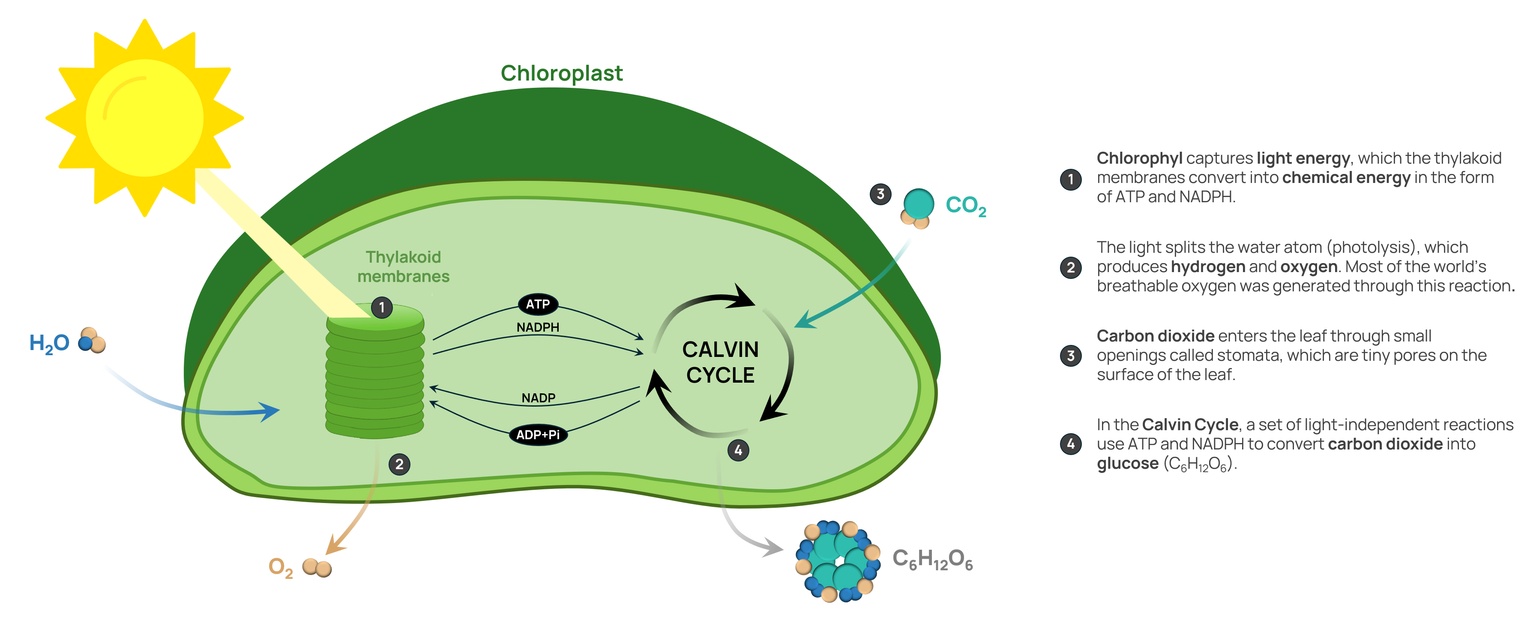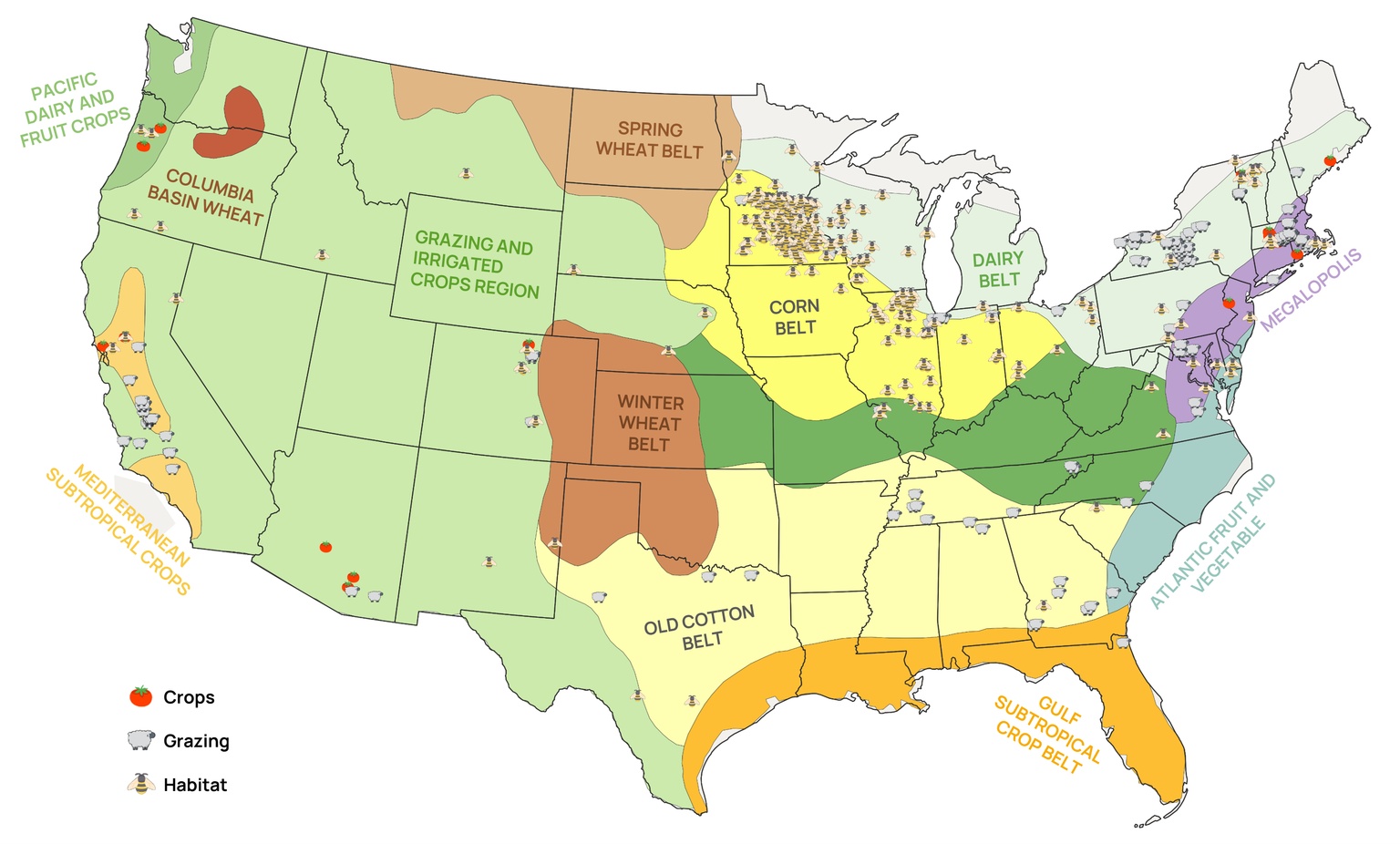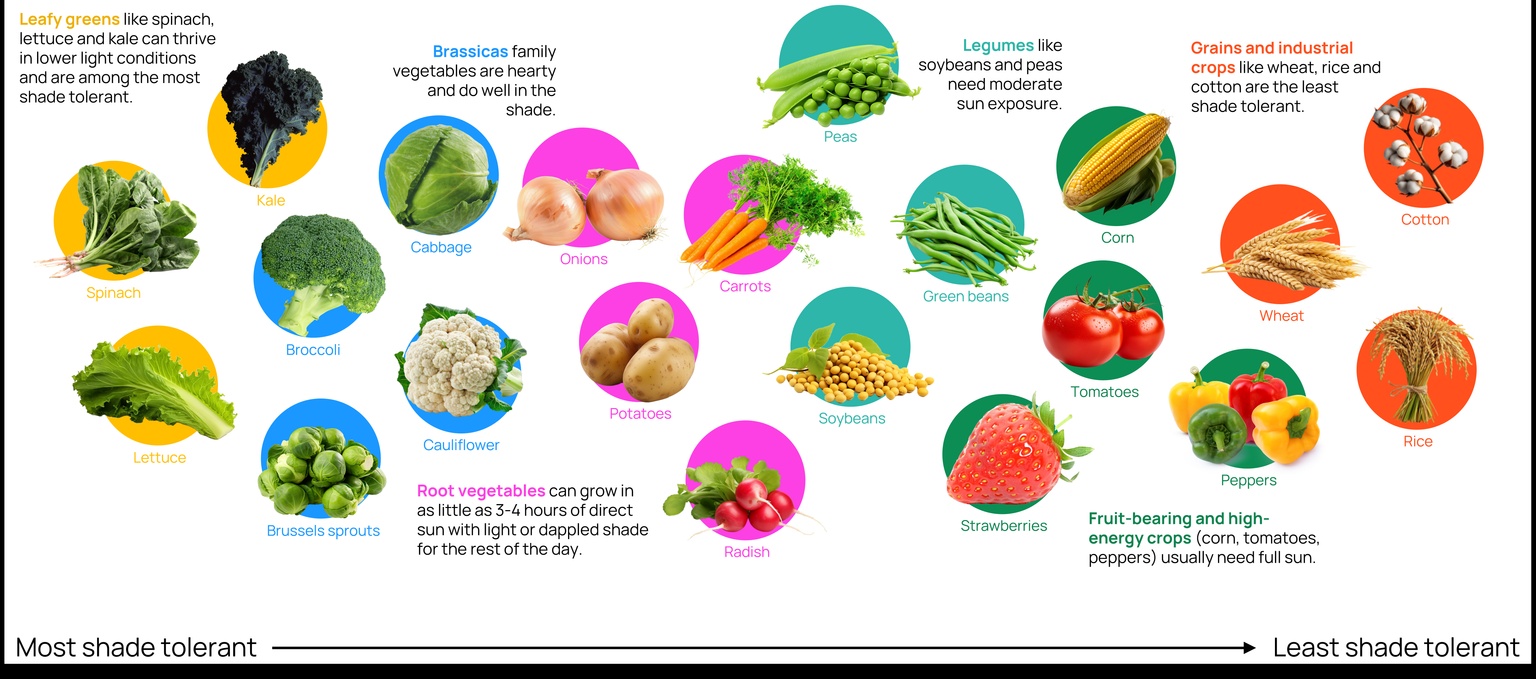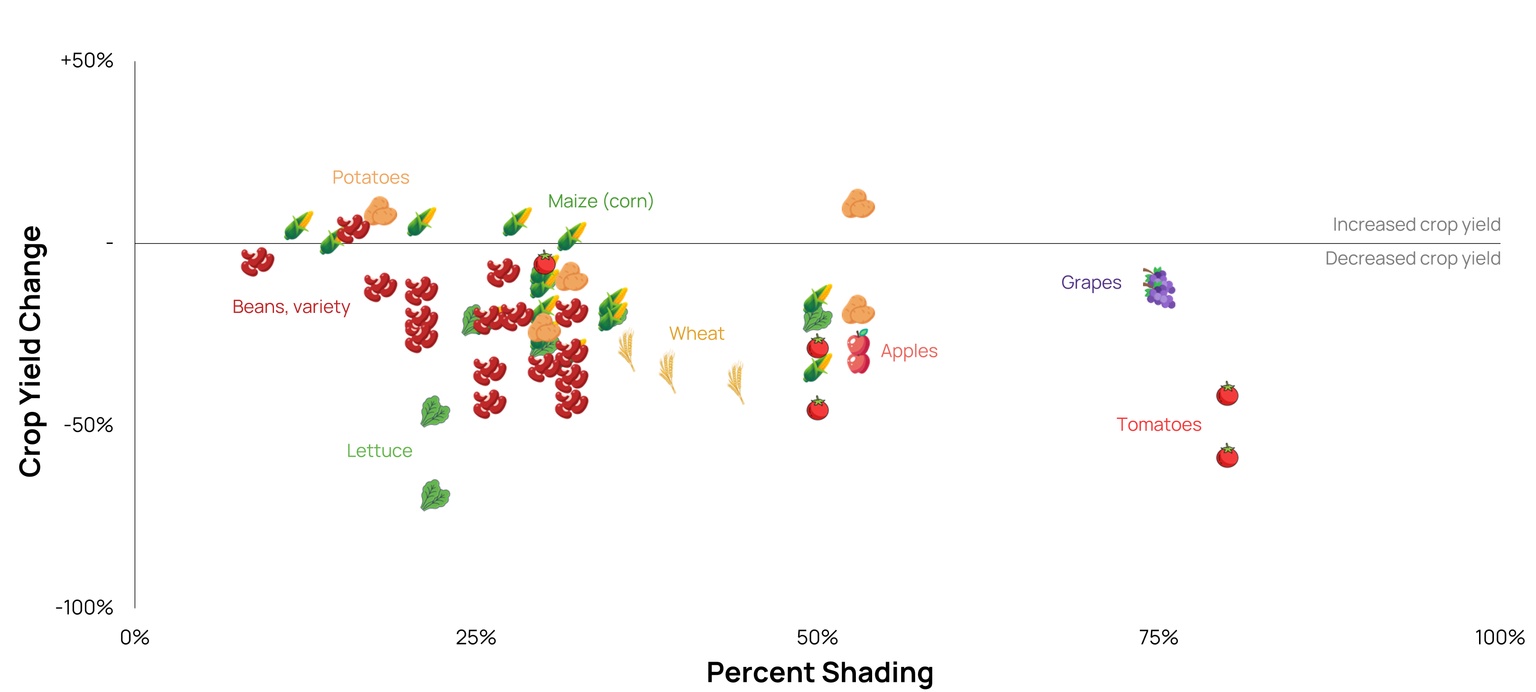
Aaron Foyer
Vice President, Research and Analytics
Should we be putting solar panels on prime farmland?

Aaron Foyer
Vice President, Research and Analytics
The process of plant photosynthesis — converting sunlight, water and carbon dioxide into oxygen and glucose — is at the heart of many of our most important global energy systems. There are some obvious systems, like growing timber to burn or converting corn crops into ethanol, but there are less obvious ones. Sedimented algae blooms and buried plants turn converted sunlight into oil and gas deposits and coal seams with a bit of pressure and heat.
With global efforts to ramp up clean energy production, there are some key properties of photosynthesis the energy industry can take advantage of. To better understand these, we need to shrink down, Magic School Bus style, and go inside the leaf of a plant.
Welcome to the surface of the leaf, also known as the epidermis. As we dive into the leaf through tiny pores known as stomata, we suddenly encounter row upon row of bubble-like structures called chloroplasts. This is where the magic happens.
Packed inside the chloroplasts are bright green thylakoid disks covered in tiny chlorophyll molecules. It’s the chlorophyll that acts as light-catching antennae, which the chloroplast use to create glucose, the plant’s main fuel source and building block.

Source: Orennia
Look closely: Watch for long enough and you’ll notice something peculiar: as the intensity of light hitting the leaf ramps up, the chloroplast eventually hits a point where the rate it produces glucose plateaus. Increasing the availability of sunlight doesn’t produce more plant—this is the light saturation point. Said another way, plants don’t consume all the light they’re given. Depending on the type of plant, just 3% to 6% of available light is ultimately used for photosynthesis.
In the early 2000s, this sparked an idea for retired Japanese engineer Akira Nagashima. He recognized if plants don’t use all available light for their development, agricultural lands could be co-located with other systems that could use the excess light. In 2004, Nagashima developed the first prototypes of a setup that combines agricultural lands with photovoltaic systems.
Nagashima referred to this system as “solar sharing.” Today, it goes by agrivoltaics.
It’s no surprise that the idea for agrivoltaics (AV) came from Japan — an island nation with 125 million inhabitants, yet with few natural resources for energy. At the time globally, especially with the high cost of solar power, there wasn’t a pressing need to co-locate solar and agriculture. But times change.
In 2023, the world added 346 gigawatts of new solar capacity. The US alone installed ~25 gigawatts of utility-scale projects, enough to easily cover an area the size of New York City’s five boroughs. This year, our forecasts at Orennia show 37 gigawatts being added in the country, which would cover an area larger than Los Angeles.
The catch: Energy is not the only system we’re looking to solve. Despite all our technological advancements, 10% of the global population still doesn’t get enough food. In 2024. That’s 783 million bellies that need filling today. By 2050, the world is expected to add another billion individuals to the mix. Put together, total world food consumption is expected to rise 50% to 70% in the coming decades. This creates a natural tension between the land needs of food and power.
The American Farmland Trust estimates 83% of new solar projects are installed on either farmland or ranchland, with 50% placed on “the most productive, versatile and resilient land”. Governments, especially populist ones, have reacted by clamping down on adding solar to farmland. The most prominent example is Italy, whose government passed a complete ban earlier this year on ground-mounted solar projects placed on all land classified as agricultural.
Which begs the question: are agrivoltaics a clever opportunity to solve two problems at once or a distraction that could hinder our precious supply of radishes?
To start with, there is no true definition of agrivoltaics, but it usually involves the dual use of land with solar power and farming. Co-locating some sort of agriculture with some arrangement of solar panels.
With regards to agriculture, there is a wide range that can be used, everything from animal husbandry to growing food. The three biggest are:
There are an estimated 15 gigawatts of agrivoltaic projects installed globally. Of this, the US accounts for two-thirds.
InSPIRE, a project developed by the US Department of Energy and the National Renewable Energy Laboratory, tracks the more than 10 gigawatts of solar over 500+ projects across the US. Grazing and habitat account for 99% of all agrivoltaic capacity across the projects.

Data source: InSPIRE
Of the largest AV projects in the country, almost all are grazing. There are 6.1 gigawatts of grazing projects are spread out across the country and mostly incorporate sheep.
The wool-covered farm favorites are well suited for AV, having relaxed temperaments and an appetite for grass that Willie Nelson would admire. Sheep grazing reduces the maintenance costs of mowing grass, and their manure acts as a natural fertilizer for the soil. Most importantly, they don’t damage the equipment. The Spanish multinational Enel reported a project in Minnesota where sheep help boost the organic soil content by 200%.
Habitat: The remaining 4 gigawatts of American AV projects almost all provide some sort of habitat, many involving bees. Minnesota is the US leader in habitat projects, having passed the Pollinator Friendly Solar Act in 2016. The law gives solar developers a smoother permitting process if they follow certain guidelines and voluntary standards that create pollinator-friendly environments. Maryland, South Carolina, Vermont, New York, Illinois and Michigan have all since passed similar laws. These created the “solar honey” industry.
There’s more to AV than just choosing an animal that won’t chew through electrical cords. The needs of individual crop types and the selected farming practices influence how solar panels are installed.

Source: College of Agricultural Sciences, Penn State University, Vecteezy (Images)
Ground coverage ratio is a key metric in agrivoltaics, defining how much sun and shade crops receive by the setup of the panels. Leafy greens and brassicas family vegetables like broccoli can tolerate more shade, while grains and fruit-bearing crops usually require higher levels of sunlight to thrive.
There are plenty of configurations for the equipment:
Finding the right balance of sunlight to produce crops and sunlight to produce solar power is key.

Source: Food Garden Life, Vecteezy (Images
The key question for farmers, politicians and policymakers is how the addition of panels onto farmland affects food supplies.
There are crops that benefit from less sunlight. In a study published in Nature Sustainability looking at chiltepin growth in the warm Tucson region, yields of the pepper increased 1.5 times under 70% to 80% shading. Another study from Greece found the plant fresh weight of leafy greens jumped when they received less light.
Unfortunately, these are outliers. In most cases, shade created by the panels decreases farming output.
The numbers: A meta-study of AV systems published earlier this year found crop yields were reduced in 80% of studies. In many cases, yields were reduced by 40% or more and in the most extreme cases by up to 88%. There is some evidence this can be made up for by longer growing periods, but generally speaking, more solar panels means less crops from farmland.
That’s not to say there aren’t any financial benefits to adding solar.
Selling the sun: In many cases, depending on the strength of the sun, the local power price and the value of the crop, adding solar panels generate significantly more income from the land than from crops alone.

Source: Diego Soto-Gómez (Universidad Politécnica de Cartagena)
Researchers from Colorado State University found that agrivoltaics on rice plantations will almost always be profitable. Because harvesting solar power is more valuable than harvesting rice, the study concluded that overall profit for a rice farm can be 22 to 115 times higher with the addition of solar panels, even with a 10% to 20% reduction in rice output.
How is the value split between developers and landowners?
Generally speaking, adding solar to cropland is lucrative for landowners.
The University of Minnesota publishes farm budgets for different crops in the state each year. In the southern part of the state, in the heart of the US Corn Belt, the average corn farm is trending to earn a net income of $452 per acre this year. 2024 looks to be a lucrative year, being higher than many recent harvests. By comparison, for fully developed solar land in the Midwest, developers will often pay farmers $1,000 to $2,000 per acre to lease the land. That’s for 20-plus years and removes the volatility of farming incomes, like weather, commodity prices and machinery.
No one likes to be too hot, and that includes cows. Some small studies on animal behavior with solar installations show livestock spend almost half of their time under the PV panel shade when it’s sunny improving their constitution.
And agrivoltaics improve the water efficiency of farming by providing partial shade to plants. Depending on the crop type and shading levels, water use can be reduced by nearly 30%. Plant sweating – technically referred to as “evapotranspiration” – cools down the solar panels, which boosts their efficiency and overall power production.
Agrivoltaics are a clever way of double harvesting the sun, once through food and second through power generation.
That said, it’s more complicated than Akira Nagashima laid out with his initial thoughts back in 2004. While crops don’t use all the available sun, the process of harnessing the remainder usually reduces crop yields. Figuring out the right balance between decreased crop yields, increased solar revenues and who captures the value will be key to unlocking its potential.
And less is needed than you’d think. According to the US Department of Agriculture, converting less than 1% of American agricultural land to agrivoltaics could meet 20% of the country’s energy need while minimizing impacts to agriculture.
In the food versus fuel debate, growing corn to make ethanol seems to get a pass. Yet, photovoltaic cells are better at capturing sunlight than photosynthesis. Solar panels harvest 100 times more solar energy per acre than growing corn and converting it into a liquid fuel. And that’s before the inefficiency of the internal combustion engine is taken into account.
Bottom line: The idea of agrivoltaics is just catching on. Every year, more studies are published across the world to find the balance of crop production, solar generation and farming income in each region. Outright blanket bans on the practice, like the law passed by Italy’s government earlier this year, are not helpful in this process of discovery.
In the words of Ms. Frizzle, “take chances, make mistakes, and get messy.” The best way to know is to do.
Data-driven insights delivered to your inbox.